Jim and Lorraine on the Russian Waterways Tour, July-August 2008
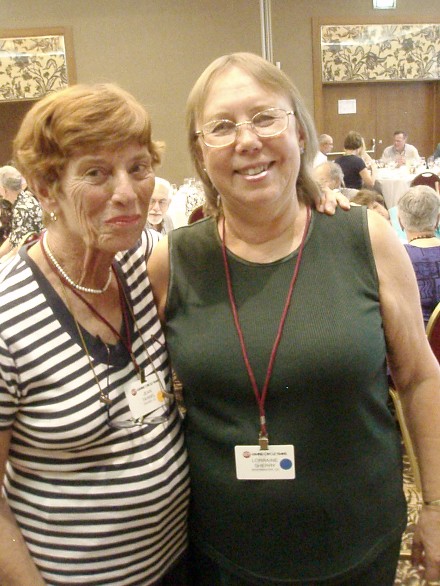 Lorraine with Jean Tarbel from the VIVA/OLLI art class |
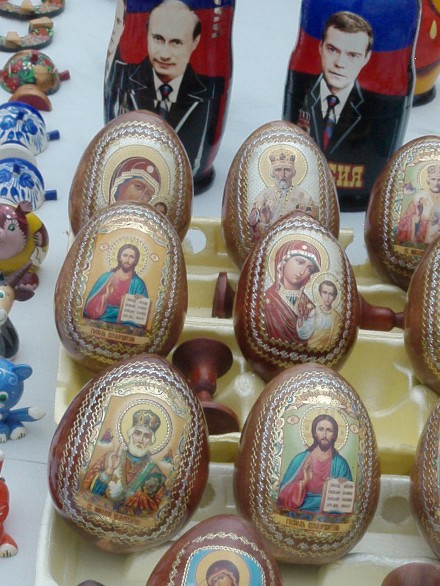 We saw lots of assorted tchatchkis sold for tourists |
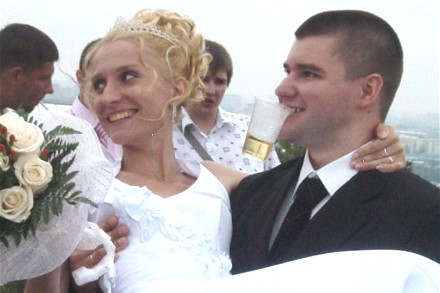 We were amazed at how many weddings there were. |
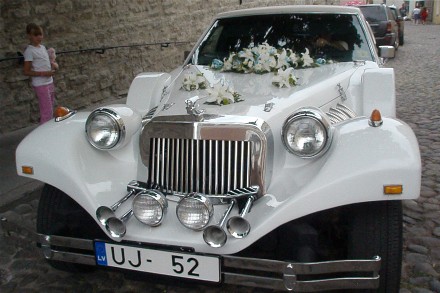 These weddings were all "over the top." |
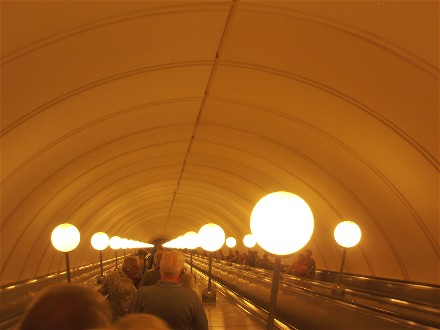 This is the escalator at the Moscow Metro to Red Square. |
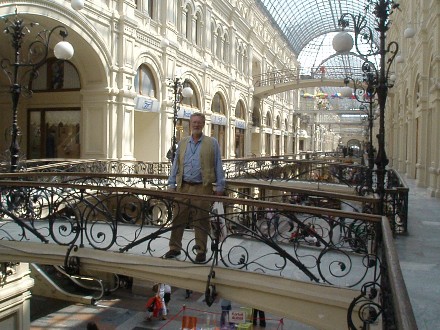 Jim in the GUM Department Store at Red Square. |
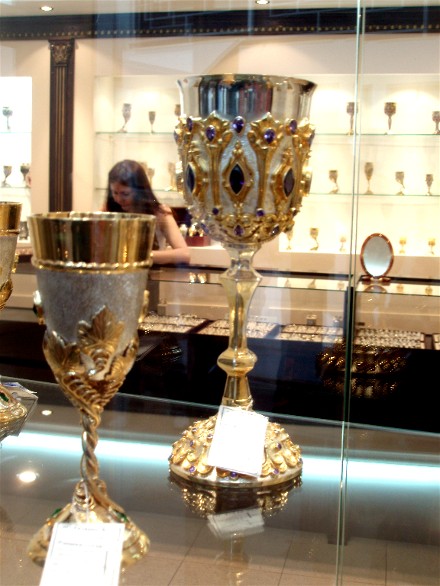 Here's a gold and silver cup with tanzanites. |
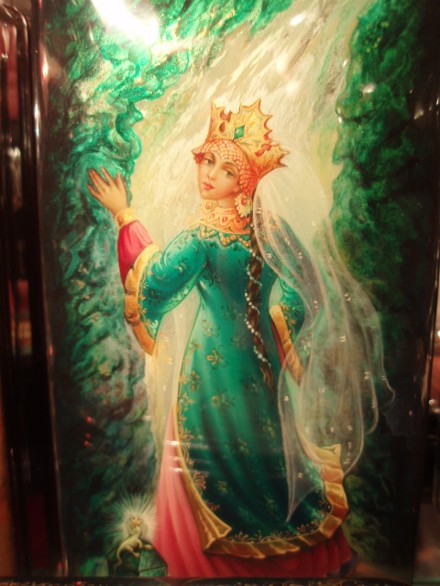 This lacquer box costs nearly $400. |
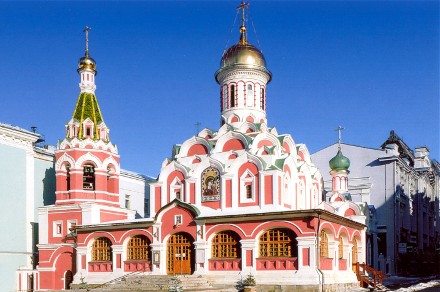 Kazansky Cathedral in Red Square. It's the main cathedral |
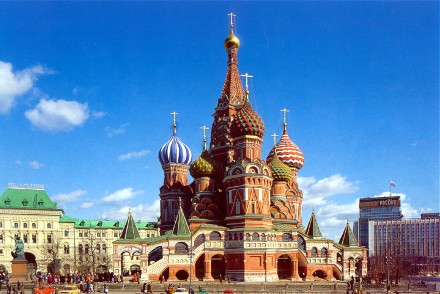 Saint Basil's Church with its colorful domes. |
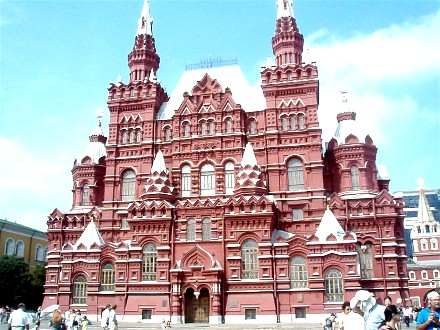 The State Historical Museum in Red Square. |
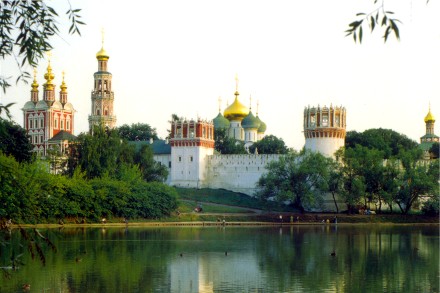 View of the Novodevichy Convent from the Moscow River. |
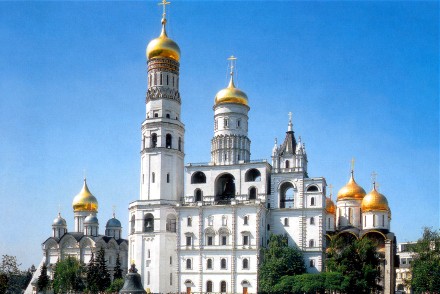 Church of the Assumption in the Kremlin. |
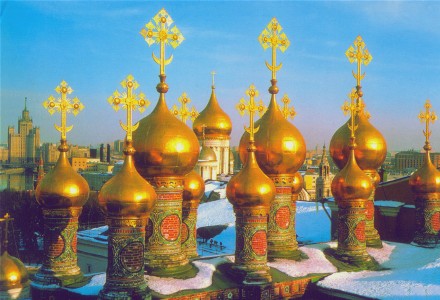 Golden cupolas of the Terem Churches |
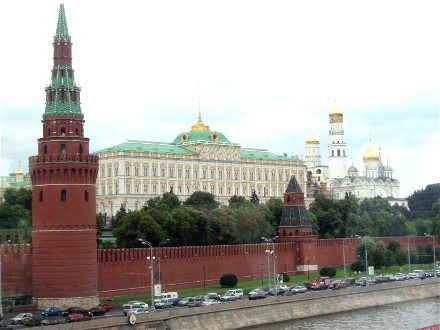 View of the Kremlin Palace from across the Moscow River. |
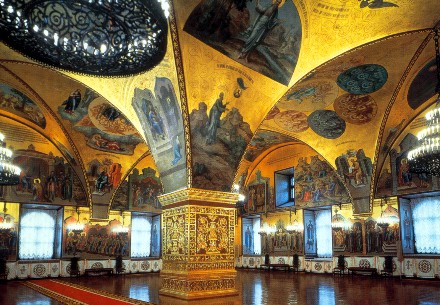 Extravagant interior of the Kremlin Palace. |
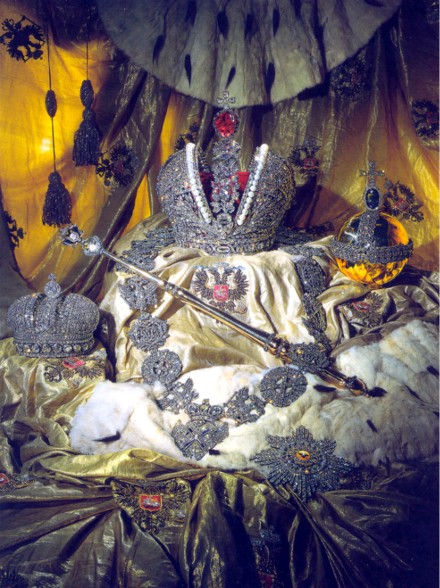 Royal regalia of the Russian Empire. |
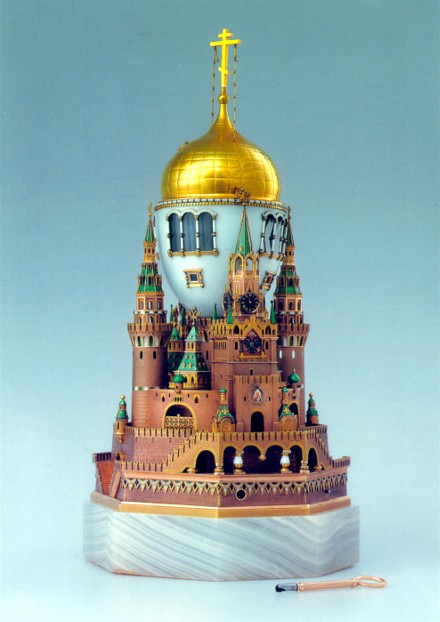 The Easter Moscow Kremlin Egg, |
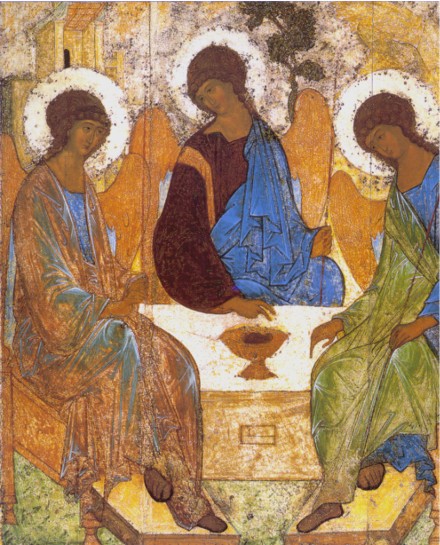 The Trinity Icon in the State Tretyakov Gallery. |
The 12th Century Vladimir icon of the Mother of God. This famous |
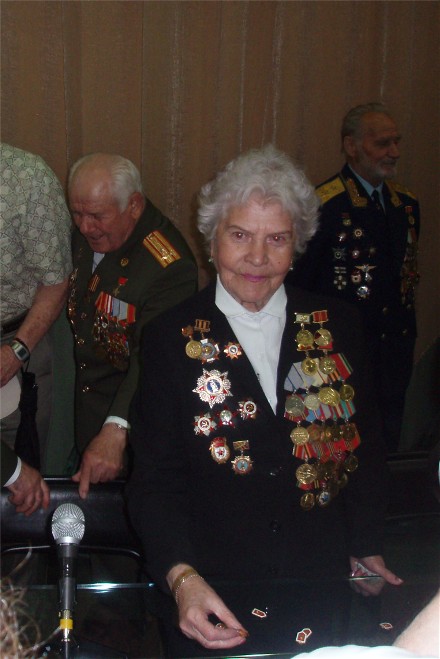 A visit to the Veteran's Museum in Moscow. |
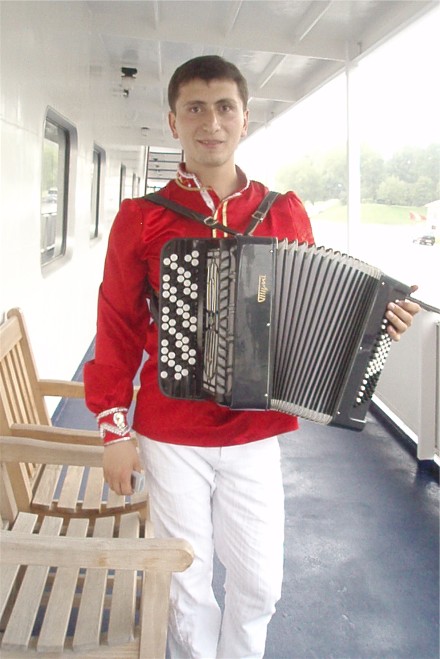 Time to board our trusty ship, the "M/S Rossia." |
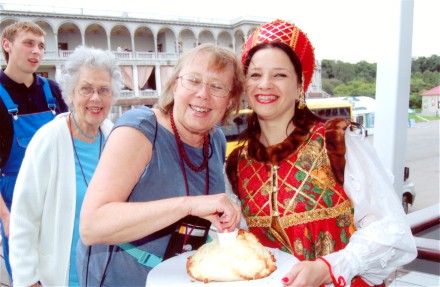 The ship's staff welcomed us with bread and salt. |
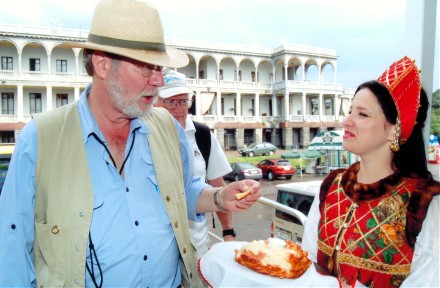 This is the Eastern European tradition showing hospitality. |
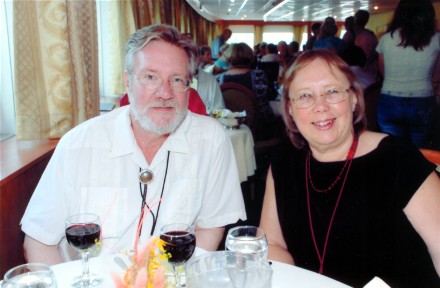 Dinner aboard ship was always a festive occasion. |
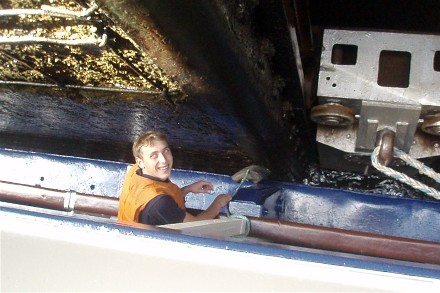 Watching the ship go through the locks was a "guy thing." |
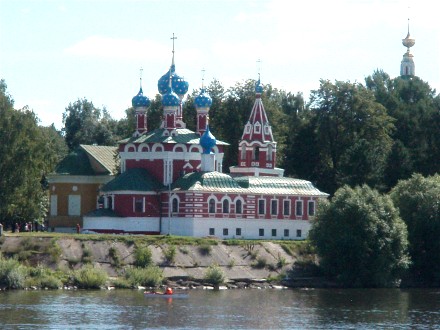 The approach to Uglich was a memorable part of the cruise. |
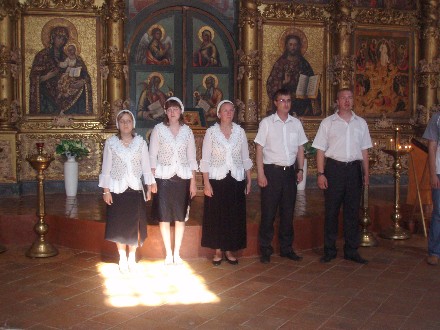 Inside the Transfiguration Cathedral we heard |
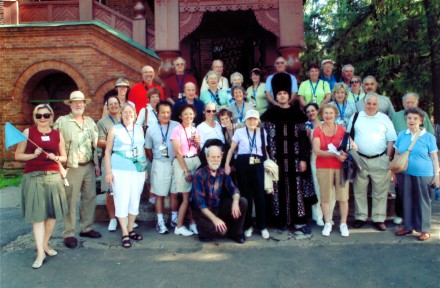 Here's a photo of our "Blue Group" |
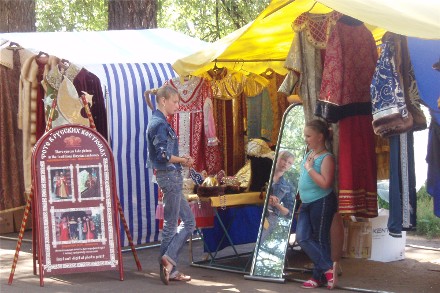 Uglich had the best flea market anywhere! |
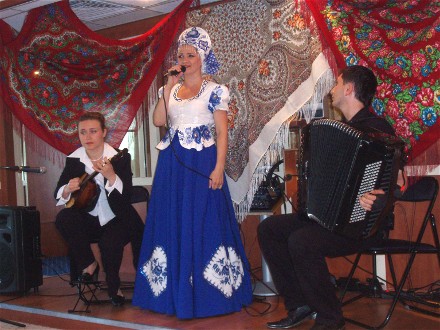
"Kalinka malinka, little tree, I am thinking of my beloved..." |
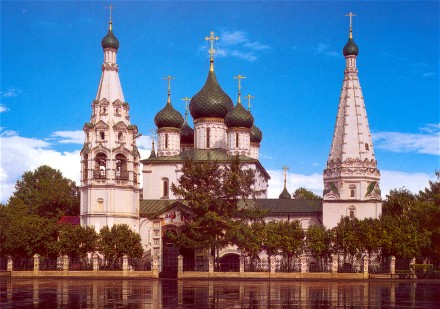 We then sailed to Yaroslavl, founded in the 11th Century. |
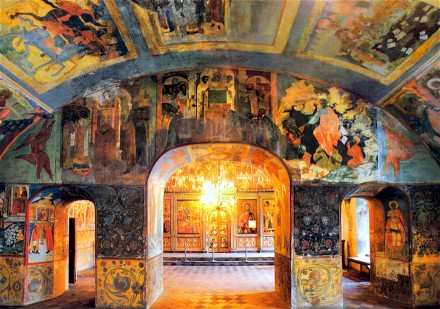
These unrestored frescoes were in absolutely perfect condition. |
The icons in the main chapel were breathtaking! |
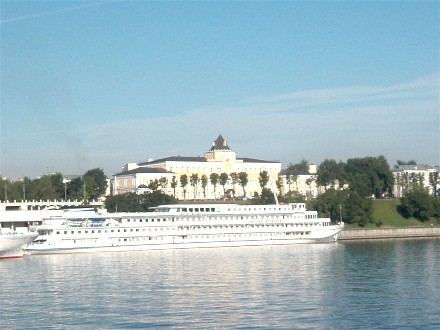 Here's the Yaroslavl port with a river ship just like ours. |
 On our tour, we were treated to a bell ringing performance. |
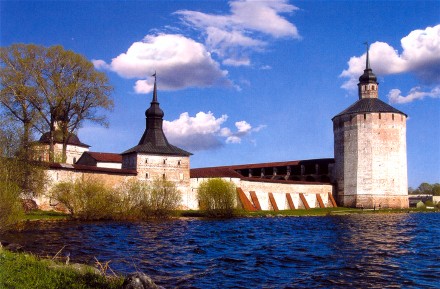 Next day, we visited the fortified Kirillo-Belozersk Monastery. |
The central church contains precious icons and frescoes |
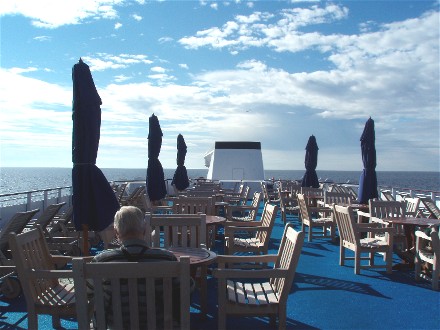 By now, we were sailing across the huge Lake Onega. |
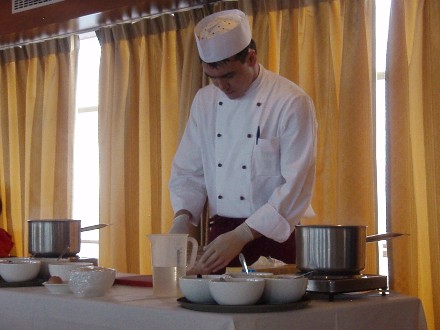 The head chef gave us a hands-on lesson in making pelmini. |
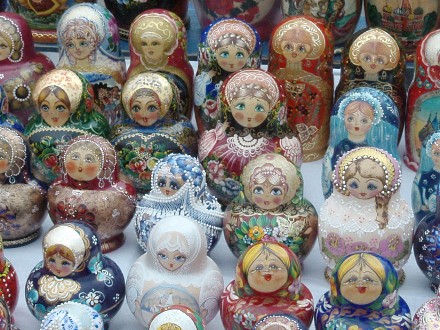 We had seen lots of matrioshka dolls on our journeys. |
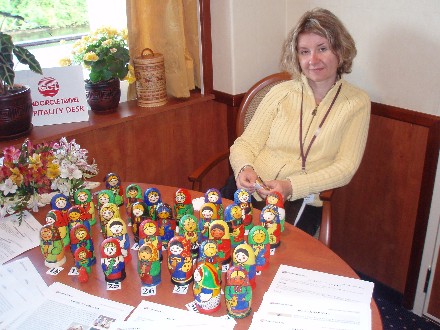 Here's Angelina (one of our guides) with our handiwork. |
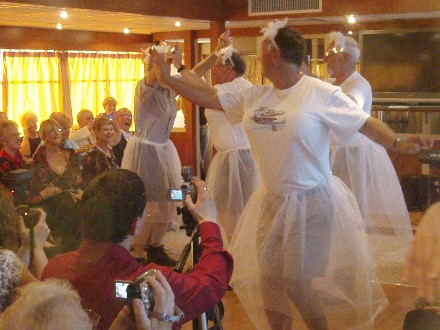 A brave group of guys did a spoof of Swan Lake. |
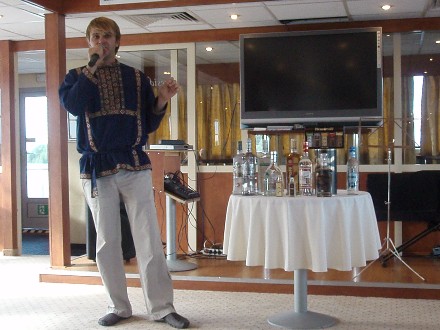 Arty at the vodka tasting contest. Maitre d' Dimitri had us |
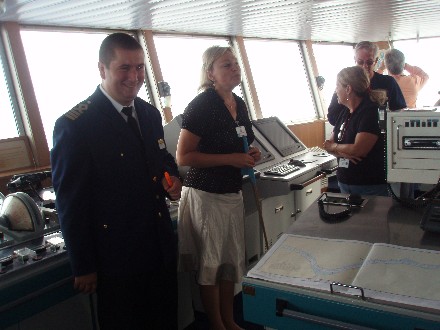 The captain gave each group a tour of the bridge. |
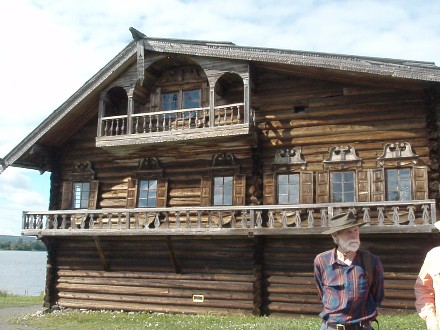 At last we arrived at Kizhi Island, with its wooden farmhouses. |
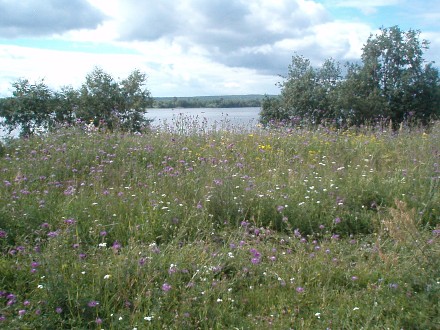 The island is unspoiled, with fields of flowers. |
The wooden church houses many lovely icons. |
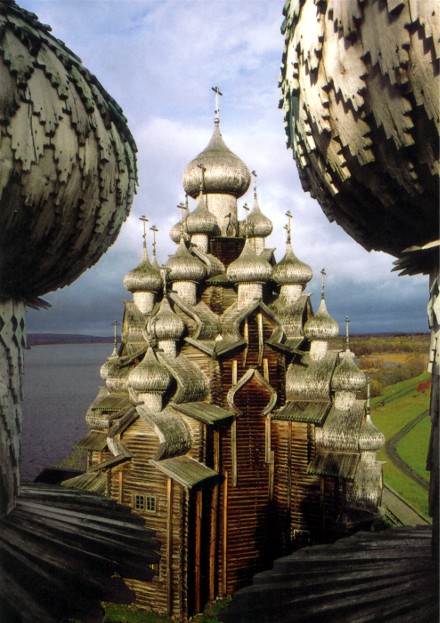 The construction of the wooden church is spectacular! |
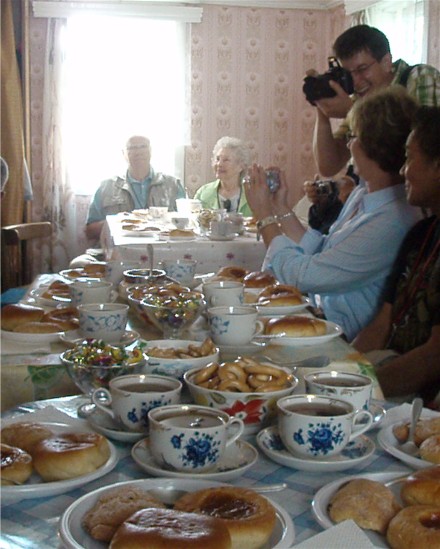 Our last island-hop was to Svir Stroi |
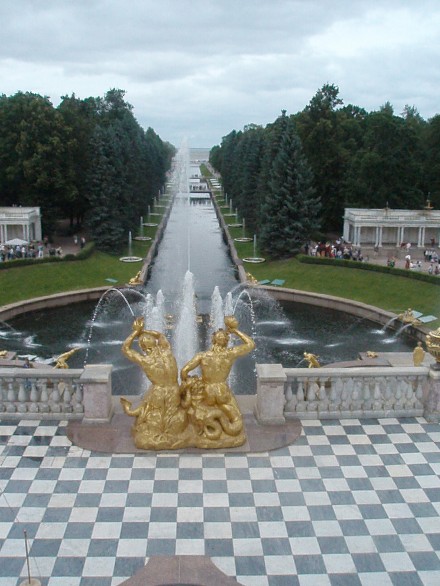 Finally, we arrived at Saint Petersburg. |
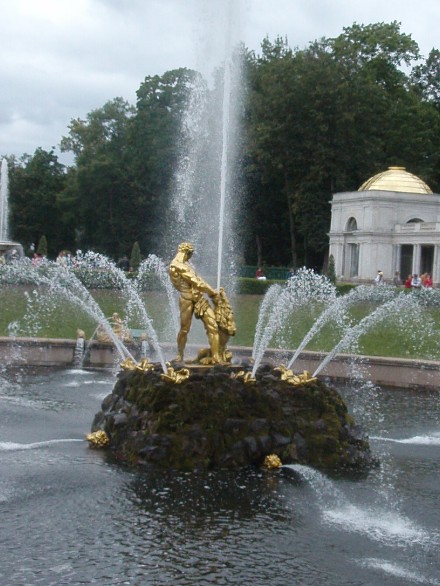 The fountains and gardens were spectacular! |
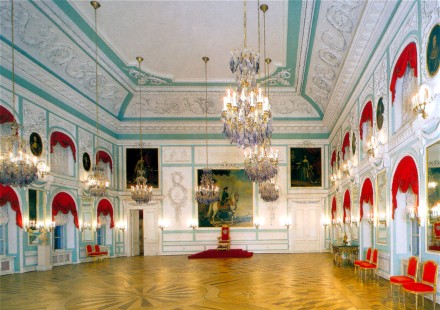 Peter the Great hired the Italian architect Rastrelli |
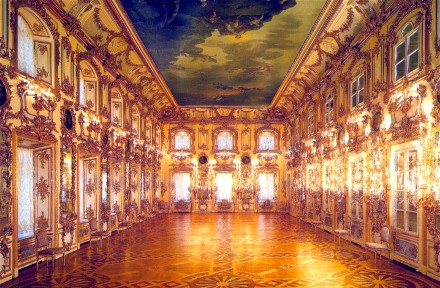 This is Peterhof's grand ballroom, in high Baroque style. |
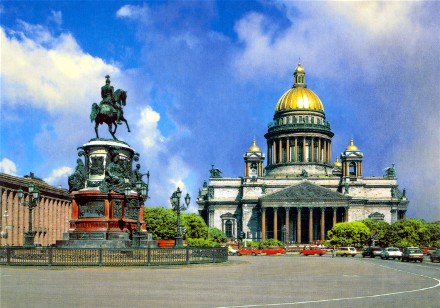 Saint Isaacs Square, downtown, with statue of Tzar Nicholas I. |
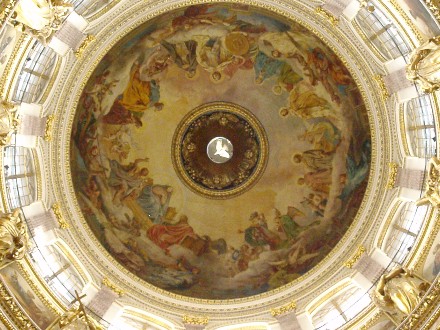 This huge cathedral was built in 1818-1858. |
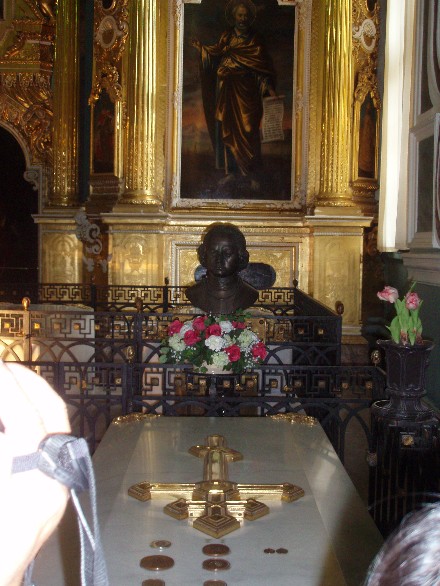 Peter the Great and all the Romanovs are buried |
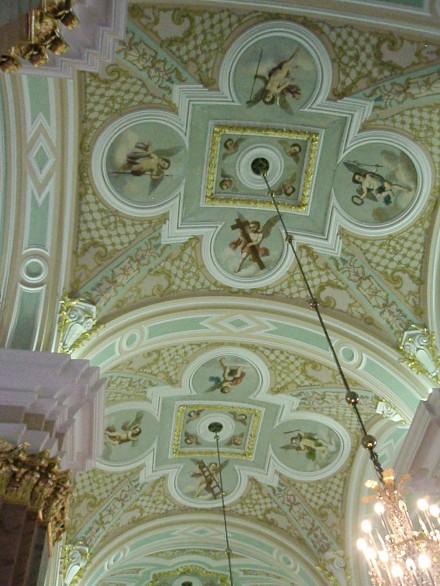 The Peter and Paul Cathedral is 400 feet tall, gorgeously decorated. |
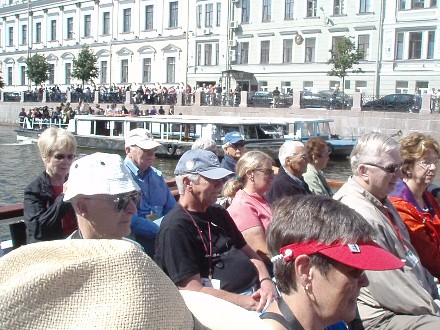 Saint Petersburg is a city of canals, "Venice of the North." |
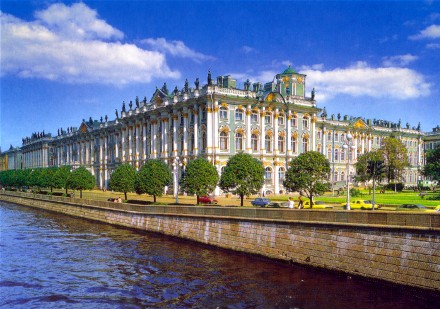 The Winter Palace is on the shore of the Neva River. |
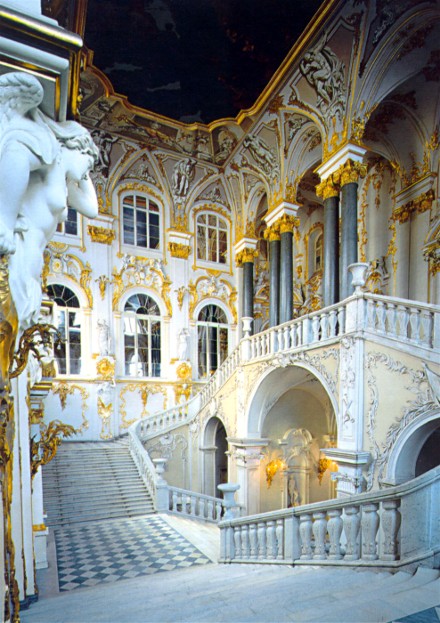 The Hermitage houses Catherine the Great's art collection. |
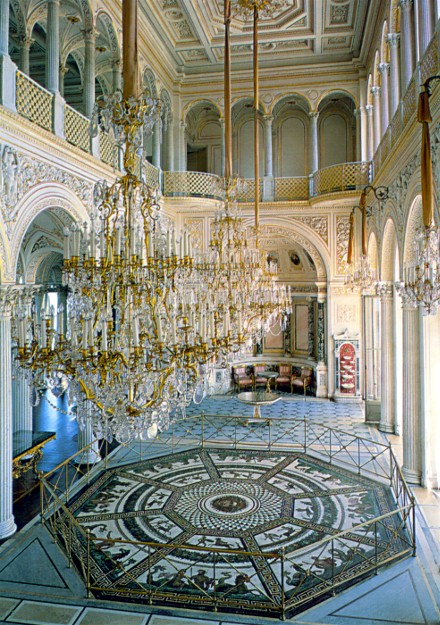 Gold, marble, malachite and jasper were used extensively. |
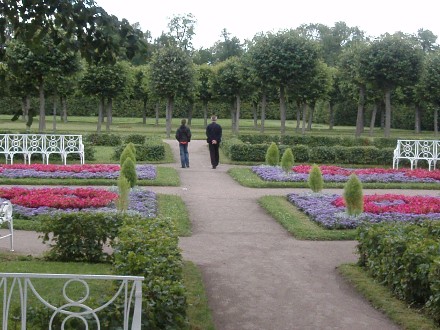 Like Peter the Great, Catherine built her own summer palace. |
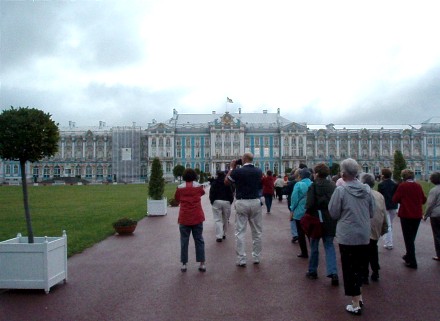 Her palace is designed in Neoclassical style. |
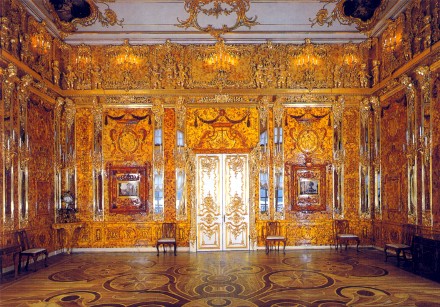 Catherine's Amber Room is absolutely spectacular! |
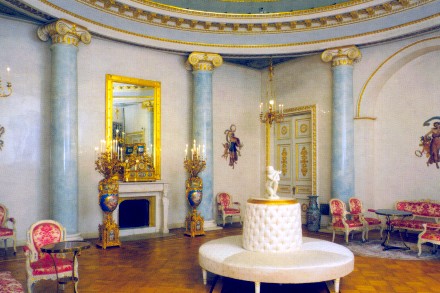 Later, we visited the Yusopov Palace on the Moyka River. |
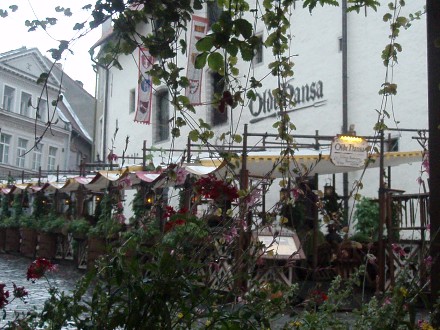 Next day, we drove to Tallinn, Estonia. |
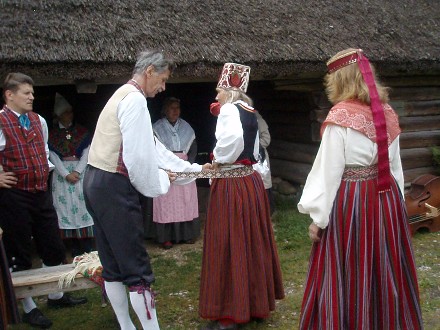 Tallinn also has a very interesting outdoor museum. |
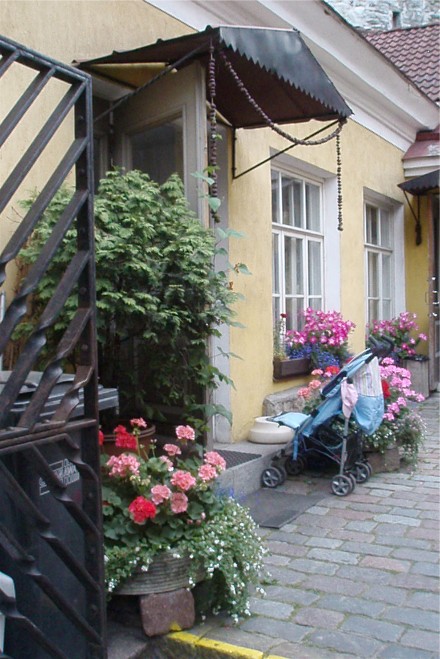 Tallinn's cobblestone streets are narrow and picturesque. |
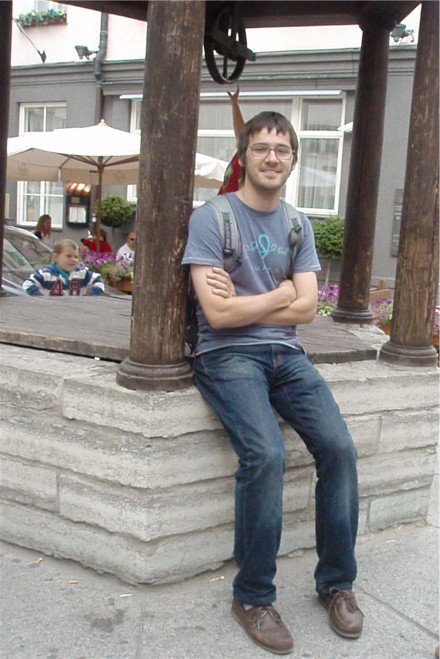 Here's our guide, Alex, at the old city well. |
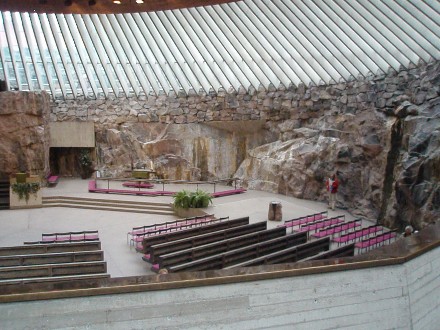 Our final cruise was on the "SuperSeaCat" ferry to Helsinki. |
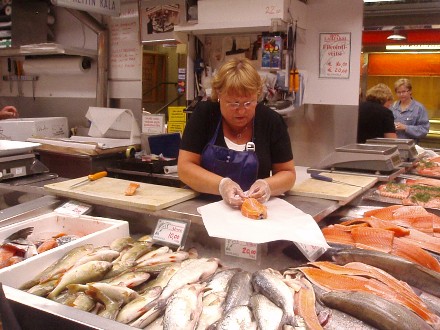 We had metro tickets to explore Helsinki on our own. |
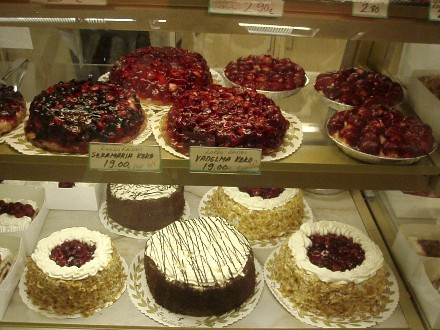 Would you believe a bakery in the fish market? |
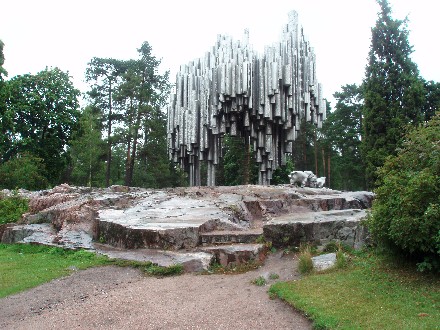 We also saw the monument dedicated to Jan Sibelius. |
![[back arrow]](../images/back_teal.gif) Back to My Home Page
Back to My Home Page